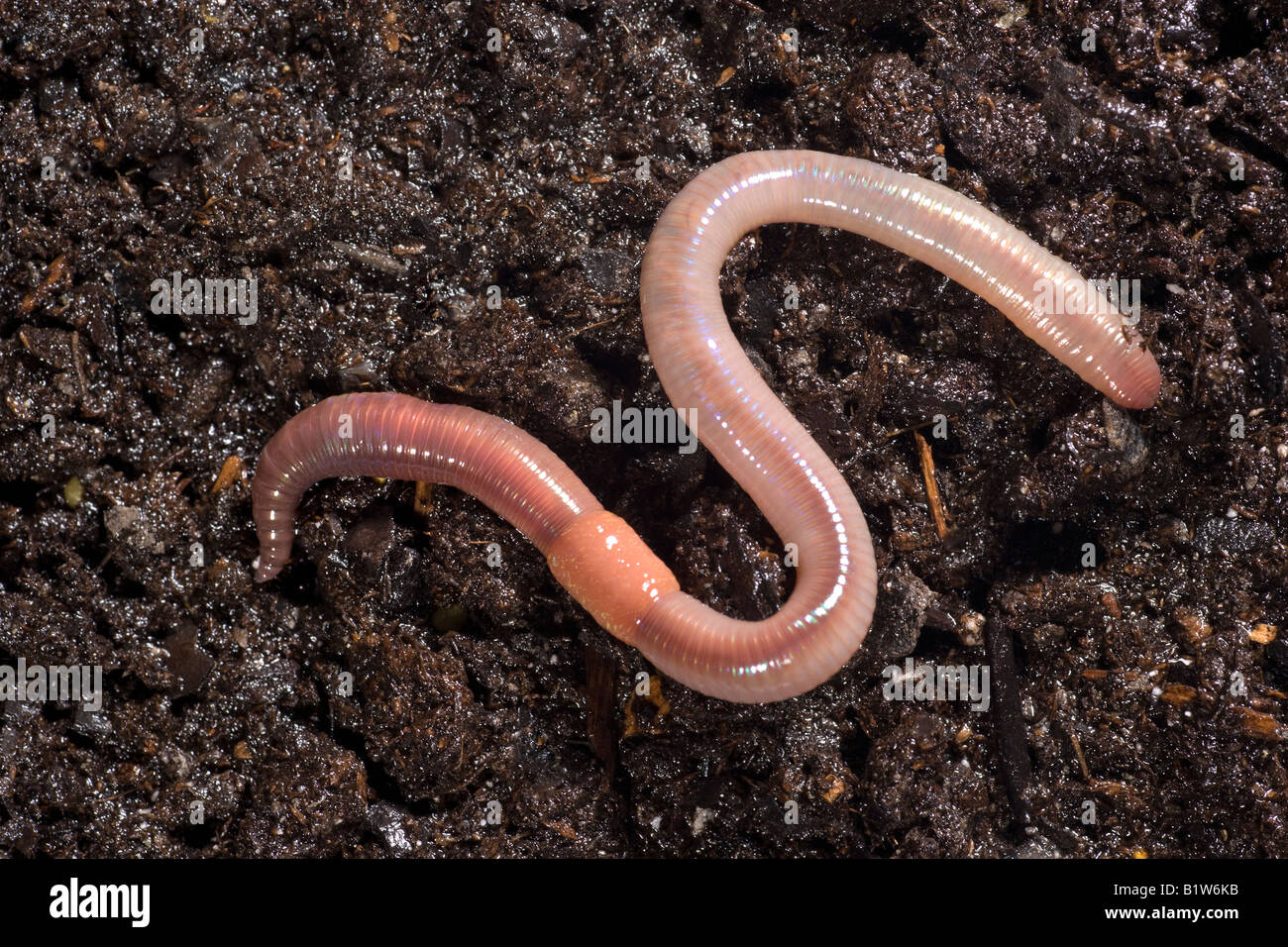Common Earthworm Lumbricus terrestris Segmented Worm

Image details
Contributor:
Phil Degginger / Alamy Stock PhotoImage ID:
B1W6KBFile size:
48.5 MB (2.9 MB Compressed download)Releases:
Model - no | Property - noDo I need a release?Dimensions:
5042 x 3361 px | 42.7 x 28.5 cm | 16.8 x 11.2 inches | 300dpiDate taken:
2008More information:
Lumbricus terrestris (L.) is a large reddish worm native to Europe, but now also widely distributed elsewhere around the world (along with several other lumbricids), due to human introductions. In some areas where it has been introduced, some people consider it to be a serious pest species, since it is out-competing locally native worms. Through much of Europe it is the largest naturally occurring species of earthworm, typically reaching 20 - 25 cm in length when extended (though in parts of southern Europe there are native species which are much larger). It has an unusual habit of copulating on the surface at night, which makes it more visible than most other earthworms. Because it is widely known, Lumbricus terrestris goes under a variety of common names.In Britain, it is primarily called the Common Earthworm. In North America, the term Nightcrawler (or Vitalis) is more common. In Canada, it is also called the Dew Worm, and in Britain, Lob Worm (though that name is also applied to a marine polychaete). In the rest of the world, most references are just to the scientific name, though, with occasional reference to the above names. Lumbricus terrestris is an anecic worm, that is, it forms temperarily deep burrows and comes to the surface to feed, as opposed to burrowing through the soil for its food as most other earthworms do. An unusual habit of this species is to pull leaves into the mouth of its burrow where they partially decay before being eaten. While they generally feed on plant material, they have been observed feeding on dead insects and feces.